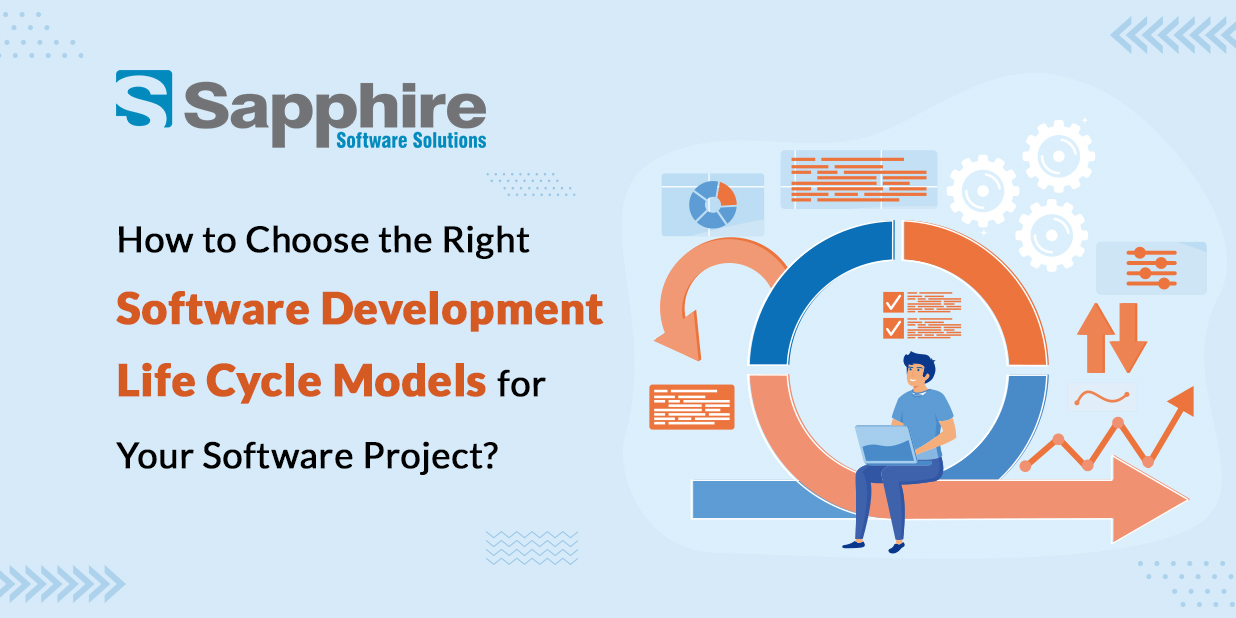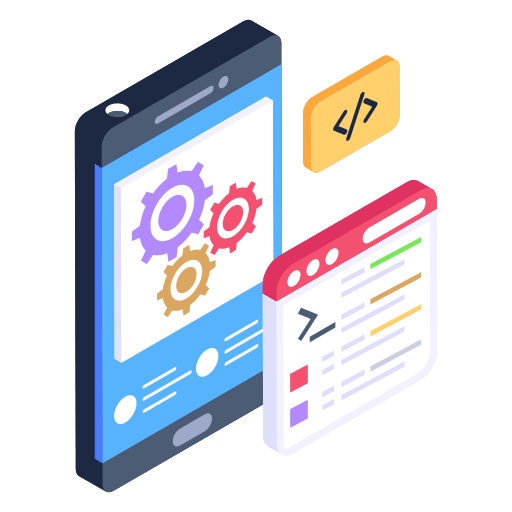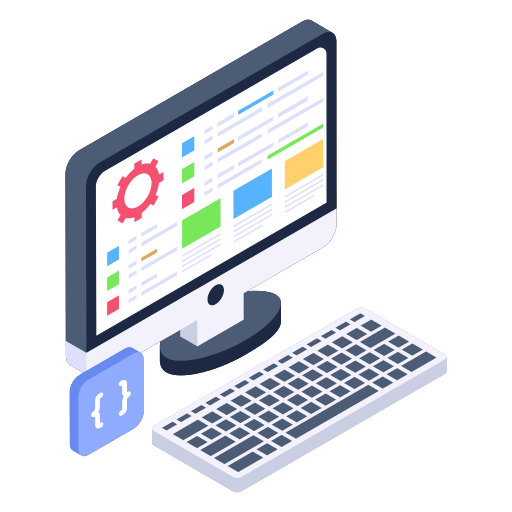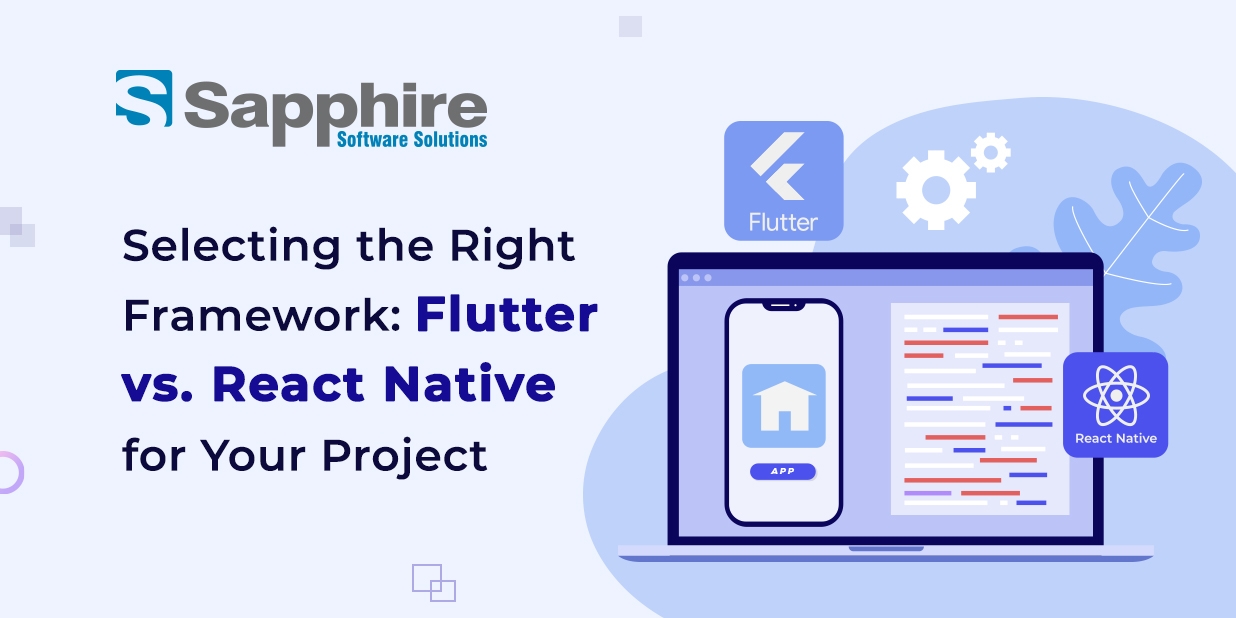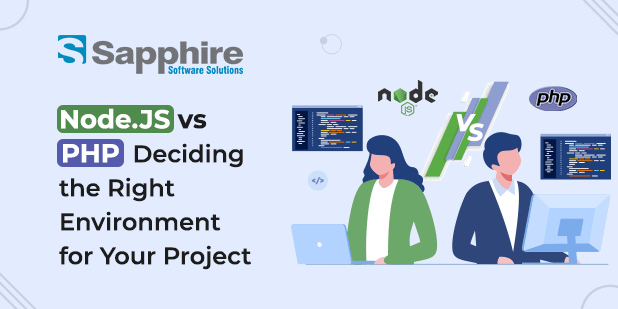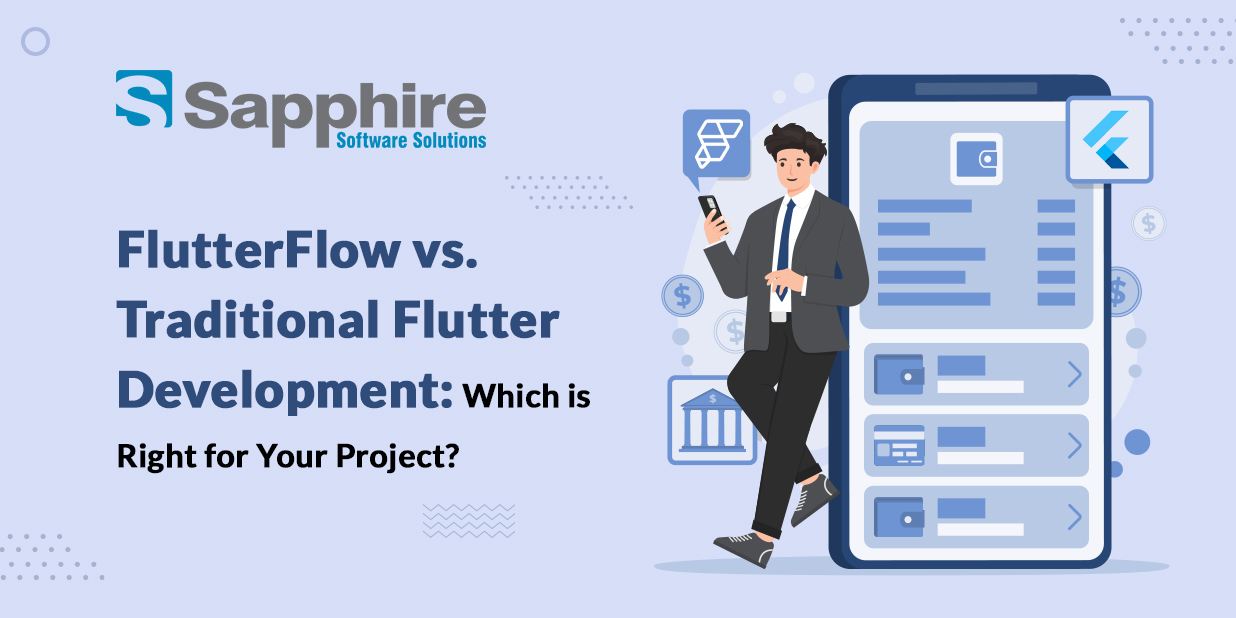The success of a software project depends first on choosing a suitable Software Development Life Cycle (SDLC) model. The main phases of software development methodologies are described in the SDLC, therefore guaranteeing a neat development from first planning to last implementation. Various SDLC models address different project requirements and provide different approaches to control development effectively. The model chosen will rely on elements like project scope, complexity, schedule, and team cooperation needs.
Each of the many SDLC models has pros and drawbacks. The Agile style is more adaptable, thereby encouraging iterative development and continual input; the software development life cycle waterfall model, on the other hand, takes a linear approach and is best for projects with clearly defined needs. Whereas the DevOps paradigm guarantees continuous integration and deployment, the Spiral model is recommended for high-risk projects requiring thorough risk assessments.
Selecting the appropriate SDLC model calls for knowledge about project objectives, client expectations, and team capacity. In contrast, projects with changing needs may find Agile or Iterative models more appropriate, and projects with tight deadlines and few modifications may benefit from rigid models like Waterfall. Better productivity and software quality may result from teams matching the nature of the project with the capabilities of each SDLC model.
This tutorial investigates many SDLC models, their relevance in software testing, and elements to take into account when selecting the appropriate one for your project.
Understanding Software Development Life Cycle Models in Software Testing:-
Software testing depends much on Software Development Life Cycle (SDLC) models as they provide the framework and approach of testing activities spread across the development process. Various SDLC models affect the techniques of testing, timing, and scope, therefore affecting software quality and efficiency. Some models, like the Waterfall Model, use a sequential testing technique wherein one step is finished before addressing the next. Software development life cycle in agile and DevOps, on the other hand, combine constant testing so that early in the development process flaws may be found and fixed. From the first stages, the V-Model stresses validation and verification at every level, therefore guaranteeing quality assurance. Multiple testing software development life cycle methods included in the iterative and Spiral models assist in improving the product by means of recurrent feedback loops.
Key SDLC models include:
- Waterfall Model
- V-Model (Verification and Validation Model)
- Iterative Model
- Spiral Model
- Agile Model
- Big Bang Model
- DevOps Model
Every SDLC model uses different testing techniques that affect automation systems, test case design, and execution approaches. Software development life cycle waterfall methods and other models depend on organized, phase-wise testing; Agile uses continuous testing all through development. Iterative models like Spiral let many testing cycles gently improve the program. Selecting the appropriate SDLC model guarantees improved product dependability, early risk reduction, and effective defect discovery. Furthermore, by matching software development methodologies with corporate objectives using the suitable model, efficiency, economy, and a better final product result follow.
Exploring the Software Development Life Cycle Agile Model:-
Particularly for projects demanding flexibility, adaptability, and fast development cycles, the Agile model is among the most often used SDLC models available today. Agile lets cross-functional teams collaborate, iteratively build, and provide constant feedback, therefore enabling effective software delivery and quality enhancements.
Agile divides development into tiny, manageable iterations known as sprints, unlike rigidly structured conventional SDLC methods. Usually lasting two to four weeks, every sprint produces a useful increment. Teams using this iterative method may react quickly to evolving demands, therefore guaranteeing that the software stays in line with corporate goals and user expectations.
Agile’s emphasis on openness, efficiency, and teamwork has changed contemporary software development. Agile-based companies report quicker time-to-market, higher software quality, and more productivity. Agile lowers risks and guarantees that projects properly satisfy user expectations by giving customer input and constant integration top priority.
The right development process minimizes risks and maximizes efficiency
Key Features of Agile:
- Time-Boxed Development: Consistent development is achieved by establishing fixed time frames for each sprint.
- Risk Mitigation: The rapid identification and resolution of issues is facilitated by early and frequent testing.
- Scalability: Enterprise-level applications can be implemented across large organizations with the assistance of agile frameworks such as SAFe.
- Enhanced Productivity: The efficacy of the team is improved and processes are streamlined through frequent iterations.
The 7 Stages of the Software Development Life Cycle Phases:-
The design phase of the SDLC is instrumental in determining the process by which the idea is transformed into a product using this multistage process.
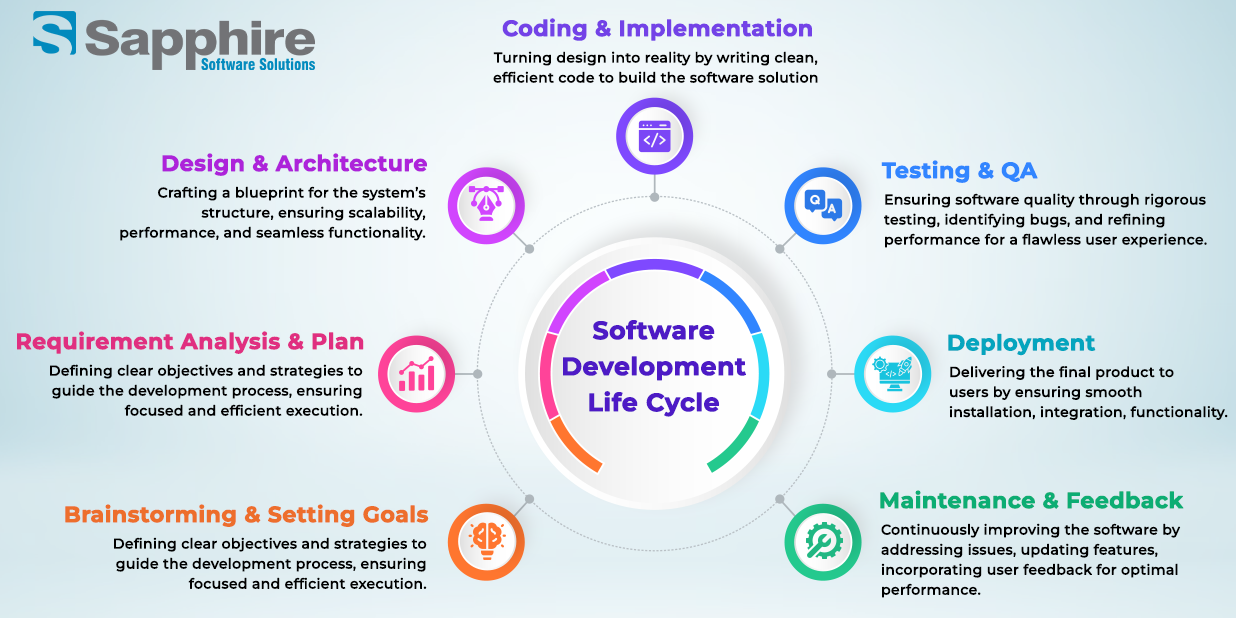
Stage 1: Planning Phase
It is beneficial to establish the scope and issue of any existing systems, as well as the objectives for their new counterparts. The team establishes fundamental objectives for application features and specify the business challenges that the features are designed to address during this phase. It is also a time to identify any unrealistic objectives that should be set aside during the planning process. For example, an application that is unable to satisfy a business requirement due to inadequate resources. Rather than squandering time at a later stage attempting to implement a feature that is ultimately abandoned, development teams should convey this during this stage. The planning process is fundamentally the process of determining how a particular software solution can be used to resolve a specific problem.
Stage 2: Analysis Stage
The analysis stage involves the collection of all the specific details necessary for a new system and the identification of the initial prototype ideas. The ultimate objective of the analysis phase is to generate a technical strategy that teams can implement. While it is unnecessary to provide line-by-line details regarding the implementation of code, it is imperative that teams are aware of the specific tools and procedures they will employ during the development of the application.
Stage 3: Design Phase
The design phase of the SDLC is a critical stage in the process of converting the collected software requirements into a structured design document. The primary developer stage is preceded by the design phase, which is essential.
Important elements in the designing phase:
Design of User Interface (UI) and User Experience (UX):
This feature guarantees a flawless and easy interface by concentrating on how users will engage with the program. Often generated to help one picture the user journey are prototypes, design mock-ups, and wireframes.
Database Design:
Developers map at this stage how data will be kept, accessible, and controlled. Designing databases, specifying connections between tables, and guaranteeing data integrity all fall within this purview.
Component and Module Design:
This technique guarantees interoperability by separating the system into smaller, controllable components, specifying their purposes, and so guarantees.
Choosing a technology stack:
Based on project needs, scalability, and security issues, the programming languages, frameworks, and tools selected at this stage are final decisions.
A well-planned design phase guarantees seamless project execution, reduces development mistakes, and improves software efficiency, therefore enabling a high-quality software result.
Stage 4: Development Stage
The development stage is the phase during which developers write code and construct the application in accordance with the previously established specifications and design documents. The technical specifications for the application that teams established during the analysis stage are utilized during the design stage. In reality, certain SDLC stages are described as a singular phase, which includes analysis and design. Nevertheless, developers should divide these processes into two phases, as analysis emphasizes technical requirements and design emphasizes user experience (UX).
Stage 5: Testing Phase
During the testing phase, developers will meticulously review their software, identifying any flaws or defects that require tracking, correction, and subsequent retesting.
Software evaluations evaluate the extent to which an application achieves objectives in the following Areas:
Performance, which refers to the application’s responsiveness.
- Load: The term “load” pertains to the application’s capacity to operate in response to fluctuations in demand.
- Security: It entails the identification of potential security vulnerabilities within the application.
- Usability: Usability, which guarantees that the application delivers an acceptable user experience.
Stage 6: Integration and Implementation Stage
The primary source code will be incorporated with various modules or designs through developer efforts, typically by utilizing training environments to identify additional errors or defects. The software is prepared for market presentation after undergoing final testing in the training or pre-production environment at this stage.
Stage 7: Maintenance Phase
The software development life cycle (SDLC) does not conclude upon its release to the market. Developers must now transition into maintenance mode and commence the practice of any necessary activities to address issues reported by end-users. This may involve the resolution of new issues that arise as a result of user reports or the management of residual flaws that were unable to be patched prior to launch. In comparison to smaller systems, larger systems may necessitate extended maintenance periods.
Software Development Life Cycle Phases Processes:-
Define the methodical technique used to create, test, and implement high-quality software by means of the Software Development Life Cycle (SDLC). These procedures guarantee dependability, simplicity, and adherence to technical and commercial criteria.
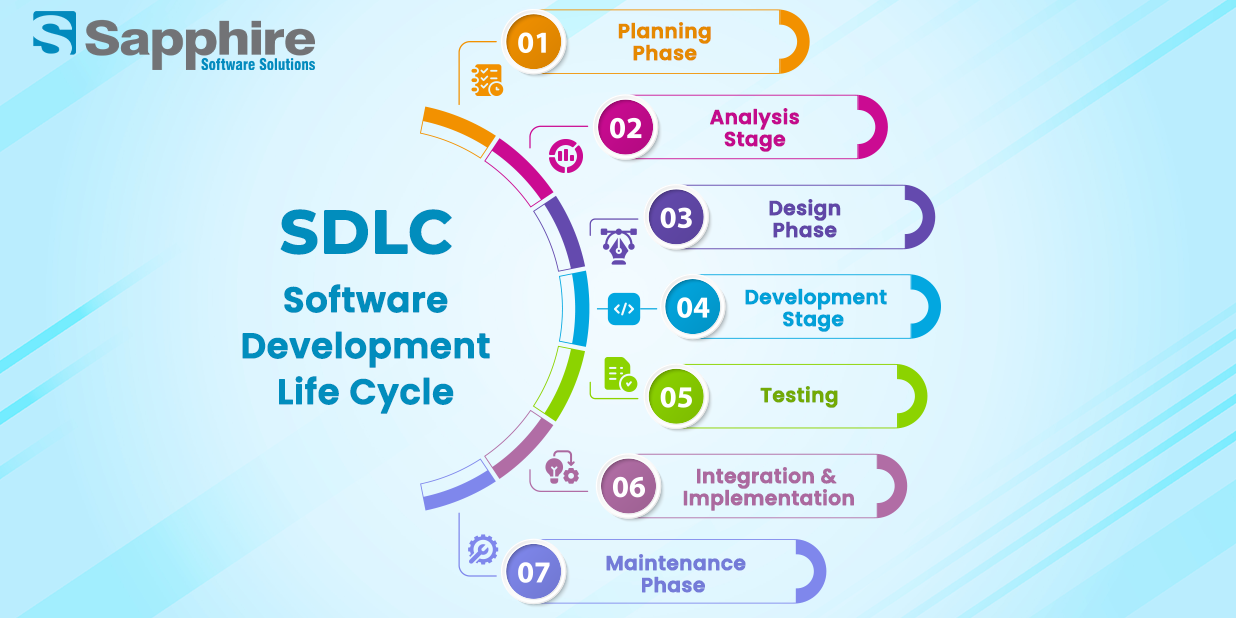
Key SDLC Processes:
Requirement Management:
This entails collecting, evaluating, and recording demands that guarantee they fit corporate criteria. Effective tracking and management of change to requirements helps to stop scope creep.
Design and Architecture in Software:
System architecture and design models are developed at this level to provide a disciplined basis for growth. For thorough application, this covers low-level design (LLD) and high-level design (HLD).
Development and Code Standards:
Guidelines and coding techniques are set to maintain security, consistency, and code quality. Git and other version control tools enable developers to coordinate changes to their code.
Software assurance and testing:
Procedures of testing guarantee performance, security, and software functioning. To find and fix flaws early on, many kinds of tests—unit testing, integration testing, system testing, and user acceptance testing (UAT)—are carried out.
Version Control and Configuration Management:
These systems monitor code versions, control software setups, and maintain system stability.
Compliance and security:
Penetration testing and code reviews are among the security best practices that guarantee software satisfies industry standards and regulatory needs thus lowering vulnerabilities.
Effective use of these SDLC techniques helps companies to improve output, reduce risks, and provide high-quality software satisfying consumer needs as well as corporate objectives.
Choosing the Right SDLC Model for Your Project:-
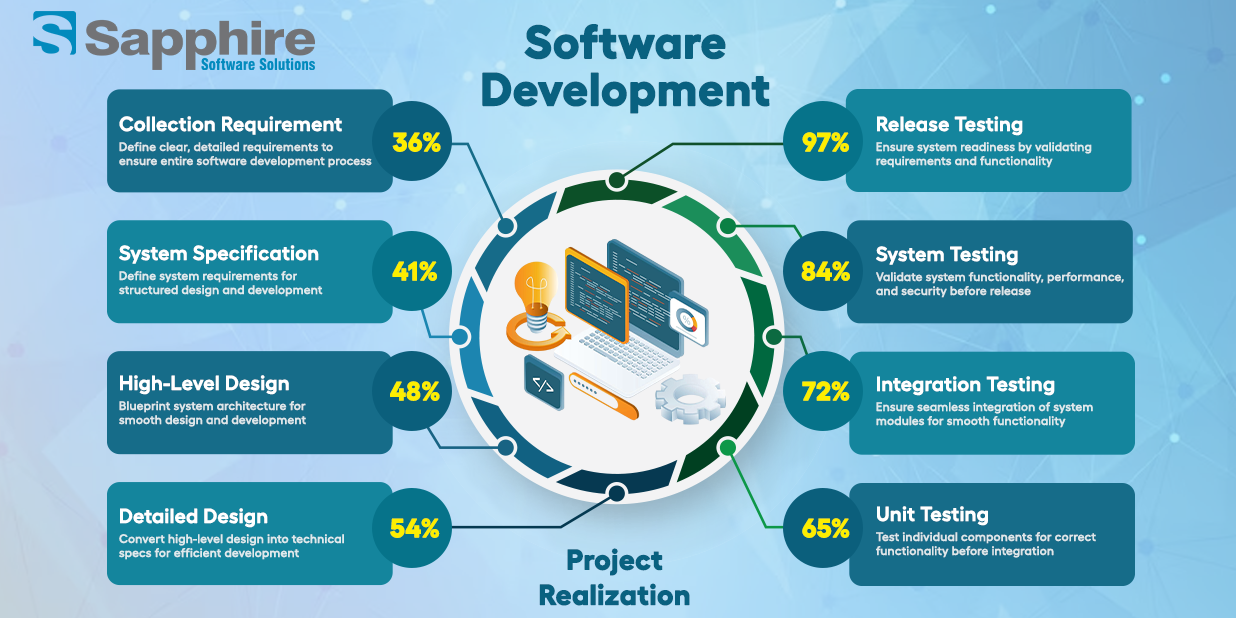
Key Considerations When Choosing an SDLC Model:
Project Size and Complexity:
While smaller, well-defined projects could suit Waterfall or V-Model, large, complicated projects might benefit from iterative models like Agile or Spiral.
Adaptability and Requirement Modifications:
While Waterfall is great for projects with steady needs, Agile and Iterative models perform better for initiatives with changing requirements.
Requests for risk management:
Projects needing thorough risk analysis and mitigating techniques will find great effectiveness in the Spiral model.
Development pace:
Agile and DevOps fit fast-paced settings as they allow quick development and constant integration.
Participant Involvement: Stakeholder
Whereas Waterfall and V-Model follow set, preset procedures, Agile promotes constant client input.
Budget Restraints:
While Agile models provide variable budgets based on changing demands, fixed-budget projects might benefit from predictive models like Waterfall.
Recommended SDLC Models Based on Project Type:
- Waterfall Model: Best for simple, structured projects with clear requirements.
- V-Model: Suitable for projects with rigorous testing needs.
- Iterative Model: Ideal for projects requiring phased development.
- Spiral Model: Recommended for high-risk projects with ongoing risk assessment.
- Agile Model: Perfect for dynamic projects requiring adaptability.
Successful software projects start with a well-defined life cycle strategy
Conclusion:
Ensuring the success of a software project depends first on selecting the correct SDLC model and Software Development Services in USA. Every approach has advantages and fits various kinds of initiatives. Agile is effective for projects needing flexibility and quick iterations; the Waterfall style performs best for those with precisely stated needs. Projects with high-risk benefit from the Spiral model; DevOps allows ongoing integration and deployment.
Teams may choose the most appropriate SDLC model by assessing elements such as project scope, complexity, schedule, and stakeholder engagement. Making wise selections requires an awareness of how every model shapes software testing and development processes.
Choosing the correct SDLC model and Software Development Company in USA guarantees software quality, lowers risks, and improves efficiency in general. Aligning the model with project objectives will result in a more simplified development process and effective software delivery regardless of your priorities for organized approaches or agile flexibility. As the Top Software Development Agency, we follow the right model and approach to make sure it fits your budget and goals perfectly.



















